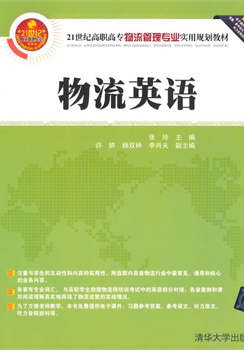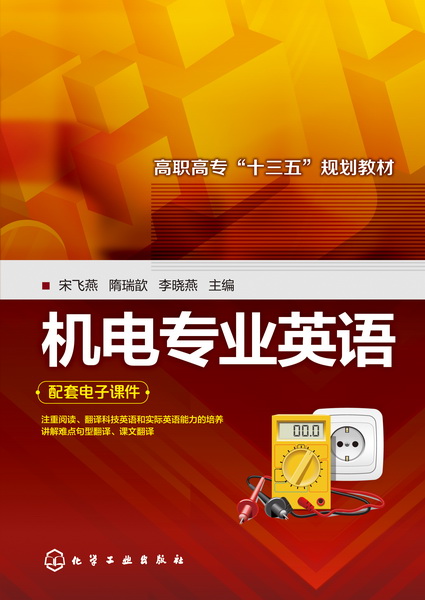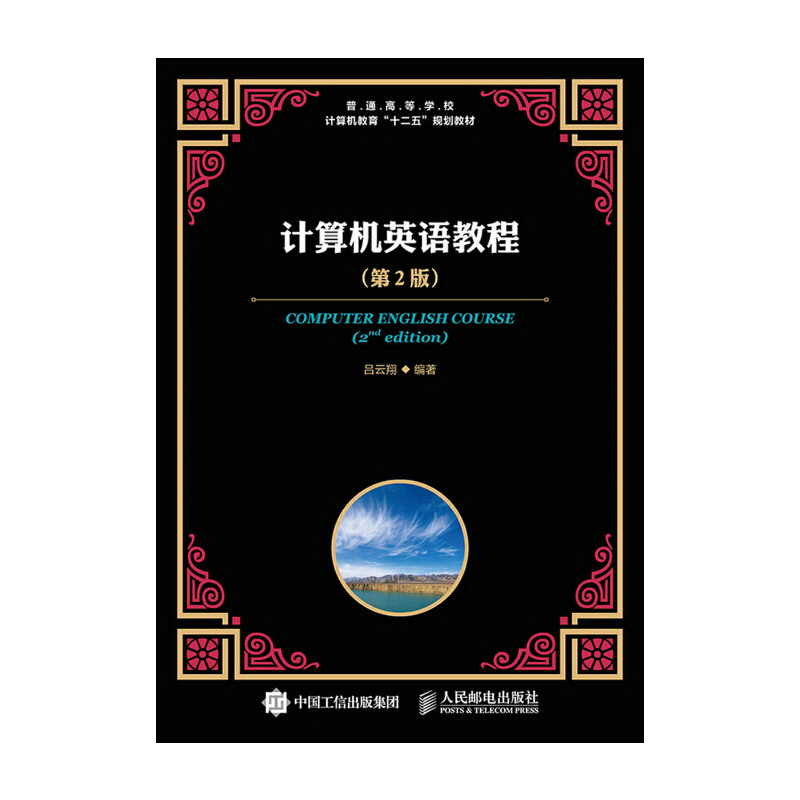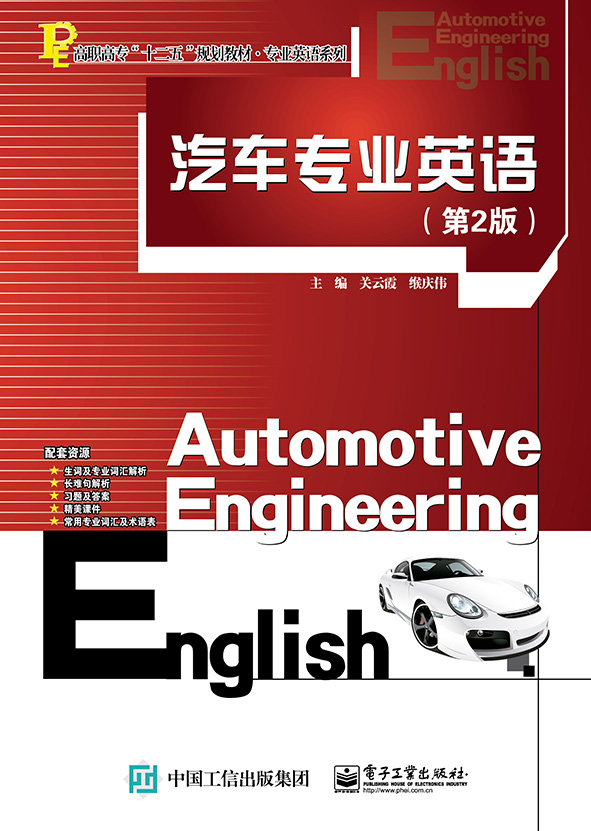物流英语 / 21世纪高职高专物流管理专业实用规划教材
定价:¥26.00
作者: 张玲,许妍等
出版时间:2015-01
出版社:清华大学出版社
- 清华大学出版社
- 9787302387572
- 1-1
- 35479
- 16开
- 2015-01
- F25
- 英语
- 高职
内容简介
《物流英语/21世纪高职高专物流管理专业实用规划教材》分为三个部分:第一部分为物流基础知识,分为10个单元,以基本的物流活动为主线,涵盖了物流系统中各环节的专业英语知识,具体包括物流概述、运输、仓储管理、库存控制、包装、配送、信息技术、采购、第三方物流和逆向物流及供应链管理的基本知识;第二部分为相关的商务信函,具体包括商务信函的基本结构、商务信函的电子形式和相关物流商务信函实例;第三部分是常用的国际物流单证范例。物流基础知识部分的每个单元都包含呼应本单元主题的专业术语以及听、说、读、写、译等学习和训练内容,全方位培养和提高学生的物流英语应用能力,突出高等职业教育的特点。
《物流英语/21世纪高职高专物流管理专业实用规划教材》可作为高职院校物流专业英语教材,a也可作为物流从业人员自学的材料。
目录
Part One Basic Knowledge About Logistics
Unit 1 Introduction to Logistics 1
Learning Objectives 1
Background 1
Logistics Terms 1
Section Ⅰ Lead-in: Speaking 2
Section Ⅱ Reading 2
Reading Activity 1 The Definition of Logistics 2
Reading Activity 2 The Components of Logistics System 3
Reading Activity 3 The History of Logistics 4
Section Ⅲ Listening 5
Section Ⅳ Speaking 6
Dialogue 1 6
Dialogue 2 7
Dialogue 3 7
Summary 8
Exercises 8
Case Study 13
Unit 2 Transportation 15
Learning Objectives 15
Background 15
Logistics Terms 15
Section Ⅰ Lead-in: Speaking 17
Section Ⅱ Reading 17
Reading Activity 1 The Function of Transportation 17
Reading Activity 2 Five Modes of Transportation 18
Reading Activity 3 Container Transportation 20
Section Ⅲ Listening 21
Section Ⅳ Speaking 22
Dialogue 1 22
Dialogue 2 23
Dialogue 3 24
Summary 25
Exercises 25
Case Study 32
Unit 3 Warehousing Management 34
Learning Objectives 34
Background 34
Logistics Terms 34
Section Ⅰ Lead-in: Speaking 37
Section Ⅱ Reading 37
Reading Activity 1 Types of Warehouses 37
Reading Activity 2 The Functions of Warehouse 38
Reading Activity 3 Principles of Warehousing Management 39
Section Ⅲ Listening 42
Section Ⅳ Speaking 42
Dialogue 1 42
Dialogue 2 43
Dialogue 3 44
Summary 44
Exercises 44
Case Study 49
Unit 4 Inventory Control 50
Learning Objectives 50
Background 50
Logistics Terms 50
Section Ⅰ Lead-in: Speaking 51
Section Ⅱ Reading 51
Reading Activity 1 The Definition and Purpose of Inventory 51
Reading Activity 2 The Classifications of Inventory 51
Reading Activity 3 ABC Analysis of Inventory 52
Section Ⅲ Listening 54
Section Ⅳ Speaking 54
Dialogue 1 54
Dialogue 2 55
Dialogue 3 55
Summary 56
Exercises 56
Case Study 59
Unit 5 Logistics Packaging 61
Learning Objectives 61
Background 61
Logistics Terms 61
Section Ⅰ Lead-in: Speaking 64
Section Ⅱ Reading 64
Reading Activity 1 The Definition and Functions of Packaging 64
Reading Activity 2 Major Categories of Packaging 64
Reading Activity 3 Green Packaging 65
Section Ⅲ Listening 66
Section Ⅳ Speaking 66
Dialogue 1 66
Dialogue 2 67
Dialogue 3 68
Summary 69
Exercises 69
Case Study 75
Unit 6 Distribution 76
Learning Objectives 76
Background 76
Logistics Terms 76
Section Ⅰ Lead-in: Speaking 76
Section Ⅱ Reading 77
Reading Activity 1 Distribution and Transportation 77
Reading Activity 2 A Typical Distribution Process 77
Section Ⅲ Listening 81
Section Ⅳ Speaking 82
Dialogue 1 82
Dialogue 2 82
Dialogue 3 83
Summary 83
Exercises 84
Case Study 87
Unit 7 Logistics Information Technology 89
Learning Objectives 89
Background 89
Logistics terms 89
Section Ⅰ Lead-in: Speaking 89
Section Ⅱ Reading 90
Reading Activity 1 Major Areas of ICT Application in Logistics 90
Reading Activity 2 Major ICTs Used in Logistics 90
Reading Activity 3 Intranets and Extranets 91
Section Ⅲ Listening 93
Section Ⅳ Speaking 93
Dialogue 1 93
Dialogue 2 94
Dialogue 3 94
Summary 95
Exercises 95
Case Study 98
Unit 8 Purchasing 99
Learning Objectives 99
Background 99
Logistics Terms 99
Section Ⅰ Lead-in: Speaking 99
Section Ⅱ Reading 99
Reading Activity 1 What Is Procurement? 99
Reading Activity 2 The Importance of Procurement 100
Reading Activity 3 Major Activities in the Procurement Process 100
Section Ⅲ Listening 101
Section Ⅳ Speaking 102
Dialogue 1 102
Dialogue 2 103
Dialogue 3 104
Summary 104
Exercises 104
Case Study 108
Unit 9 Third-party Logistics and Reverse Logistics 110
Learning Objectives 110
Background 110
Logistics Terms 110
Section Ⅰ Lead-in: Speaking 111
Section Ⅱ Reading 111
Reading Activity 1 What’s 3PL? 111
Reading Activity 2 The Basic Features of 3PL 111
Reading Activity 3 How to Choose 3PL Suppliers? 112
Reading Activity 4 What’s Reverse Logistics? 112
Reading Activity 5 Main Activities of Reverse Logistics 113
Reading Activity 6 Why Companies Pay More Attention to Reverse Logistics? 113
Section Ⅲ Listening 115
Section Ⅳ Speaking 116
Dialogue 1 116
Dialogue 2 117
Dialogue 3 118
Summary 118
Exercises 119
Case Study 124
Unit 10 Supply Chain Management 126
Learning Objectives 126
Background 126
Logistics Terms 126
Section Ⅰ Lead-in: Speaking 126
Section Ⅱ Reading 127
Reading Activity 1 Supply Chain and Supply Chain Management 127
Reading Activity 2 Two Systems of Supply Chains—MTO vs MTS 128
Reading Activity 3 Factors for the Successful SCM 128
Section Ⅲ Listening 129
Section Ⅳ Speaking 130
Dialogue 1 130
Dialogue 2 130
Dialogue 3 131
Summary 132
Exercises 132
Case Study 138
Part Two Logistics English Correspondence Writing
Unit 11 Layout of Business Letters 141
Learning Objectives 141
Section Ⅰ Principal and Optional Parts of Business Letters 141
Section Ⅱ Two Formats of Business Letters 144
Section Ⅲ Two Ways of Addressing an Envelope 147
Unit 12 Electronic Forms of Business Letters 148
Learning Objectives 148
Section Ⅰ Telex 148
Section Ⅱ Fax 150
Section Ⅲ E-mail 150
Unit 13 Specimen Business Correspondence 152
Learning Objectives 152
Section Ⅰ Letters of Establishing Business Relations 152
Sample 1 152
Sample 2 154
Section Ⅱ Letters of Enquiry, Offer and Confirmation 155
Sample 1 155
Sample 2 157
Sample 3 159
Section Ⅲ Letters of Orders 161
Sample 161
Section Ⅳ Letters of Packing and Shipment 162
Sample 1 162
Sample 2 163
Part Three Appendixes—Logistics Documents
Appendix 1 Sales Confirmation 165
Appendix 2 Letter of Credit 167
Appendix 3 Commercial Invoice 170
Appendix 4 Packing List 171
Appendix 5 Container Shipping Note 172
Appendix 6 Bill of Lading 174
Appendix 7 Inspection Certificate of Quality 176
Appendix 8 Insurance Policy 177
Reference Books 179
Unit 1 Introduction to Logistics 1
Learning Objectives 1
Background 1
Logistics Terms 1
Section Ⅰ Lead-in: Speaking 2
Section Ⅱ Reading 2
Reading Activity 1 The Definition of Logistics 2
Reading Activity 2 The Components of Logistics System 3
Reading Activity 3 The History of Logistics 4
Section Ⅲ Listening 5
Section Ⅳ Speaking 6
Dialogue 1 6
Dialogue 2 7
Dialogue 3 7
Summary 8
Exercises 8
Case Study 13
Unit 2 Transportation 15
Learning Objectives 15
Background 15
Logistics Terms 15
Section Ⅰ Lead-in: Speaking 17
Section Ⅱ Reading 17
Reading Activity 1 The Function of Transportation 17
Reading Activity 2 Five Modes of Transportation 18
Reading Activity 3 Container Transportation 20
Section Ⅲ Listening 21
Section Ⅳ Speaking 22
Dialogue 1 22
Dialogue 2 23
Dialogue 3 24
Summary 25
Exercises 25
Case Study 32
Unit 3 Warehousing Management 34
Learning Objectives 34
Background 34
Logistics Terms 34
Section Ⅰ Lead-in: Speaking 37
Section Ⅱ Reading 37
Reading Activity 1 Types of Warehouses 37
Reading Activity 2 The Functions of Warehouse 38
Reading Activity 3 Principles of Warehousing Management 39
Section Ⅲ Listening 42
Section Ⅳ Speaking 42
Dialogue 1 42
Dialogue 2 43
Dialogue 3 44
Summary 44
Exercises 44
Case Study 49
Unit 4 Inventory Control 50
Learning Objectives 50
Background 50
Logistics Terms 50
Section Ⅰ Lead-in: Speaking 51
Section Ⅱ Reading 51
Reading Activity 1 The Definition and Purpose of Inventory 51
Reading Activity 2 The Classifications of Inventory 51
Reading Activity 3 ABC Analysis of Inventory 52
Section Ⅲ Listening 54
Section Ⅳ Speaking 54
Dialogue 1 54
Dialogue 2 55
Dialogue 3 55
Summary 56
Exercises 56
Case Study 59
Unit 5 Logistics Packaging 61
Learning Objectives 61
Background 61
Logistics Terms 61
Section Ⅰ Lead-in: Speaking 64
Section Ⅱ Reading 64
Reading Activity 1 The Definition and Functions of Packaging 64
Reading Activity 2 Major Categories of Packaging 64
Reading Activity 3 Green Packaging 65
Section Ⅲ Listening 66
Section Ⅳ Speaking 66
Dialogue 1 66
Dialogue 2 67
Dialogue 3 68
Summary 69
Exercises 69
Case Study 75
Unit 6 Distribution 76
Learning Objectives 76
Background 76
Logistics Terms 76
Section Ⅰ Lead-in: Speaking 76
Section Ⅱ Reading 77
Reading Activity 1 Distribution and Transportation 77
Reading Activity 2 A Typical Distribution Process 77
Section Ⅲ Listening 81
Section Ⅳ Speaking 82
Dialogue 1 82
Dialogue 2 82
Dialogue 3 83
Summary 83
Exercises 84
Case Study 87
Unit 7 Logistics Information Technology 89
Learning Objectives 89
Background 89
Logistics terms 89
Section Ⅰ Lead-in: Speaking 89
Section Ⅱ Reading 90
Reading Activity 1 Major Areas of ICT Application in Logistics 90
Reading Activity 2 Major ICTs Used in Logistics 90
Reading Activity 3 Intranets and Extranets 91
Section Ⅲ Listening 93
Section Ⅳ Speaking 93
Dialogue 1 93
Dialogue 2 94
Dialogue 3 94
Summary 95
Exercises 95
Case Study 98
Unit 8 Purchasing 99
Learning Objectives 99
Background 99
Logistics Terms 99
Section Ⅰ Lead-in: Speaking 99
Section Ⅱ Reading 99
Reading Activity 1 What Is Procurement? 99
Reading Activity 2 The Importance of Procurement 100
Reading Activity 3 Major Activities in the Procurement Process 100
Section Ⅲ Listening 101
Section Ⅳ Speaking 102
Dialogue 1 102
Dialogue 2 103
Dialogue 3 104
Summary 104
Exercises 104
Case Study 108
Unit 9 Third-party Logistics and Reverse Logistics 110
Learning Objectives 110
Background 110
Logistics Terms 110
Section Ⅰ Lead-in: Speaking 111
Section Ⅱ Reading 111
Reading Activity 1 What’s 3PL? 111
Reading Activity 2 The Basic Features of 3PL 111
Reading Activity 3 How to Choose 3PL Suppliers? 112
Reading Activity 4 What’s Reverse Logistics? 112
Reading Activity 5 Main Activities of Reverse Logistics 113
Reading Activity 6 Why Companies Pay More Attention to Reverse Logistics? 113
Section Ⅲ Listening 115
Section Ⅳ Speaking 116
Dialogue 1 116
Dialogue 2 117
Dialogue 3 118
Summary 118
Exercises 119
Case Study 124
Unit 10 Supply Chain Management 126
Learning Objectives 126
Background 126
Logistics Terms 126
Section Ⅰ Lead-in: Speaking 126
Section Ⅱ Reading 127
Reading Activity 1 Supply Chain and Supply Chain Management 127
Reading Activity 2 Two Systems of Supply Chains—MTO vs MTS 128
Reading Activity 3 Factors for the Successful SCM 128
Section Ⅲ Listening 129
Section Ⅳ Speaking 130
Dialogue 1 130
Dialogue 2 130
Dialogue 3 131
Summary 132
Exercises 132
Case Study 138
Part Two Logistics English Correspondence Writing
Unit 11 Layout of Business Letters 141
Learning Objectives 141
Section Ⅰ Principal and Optional Parts of Business Letters 141
Section Ⅱ Two Formats of Business Letters 144
Section Ⅲ Two Ways of Addressing an Envelope 147
Unit 12 Electronic Forms of Business Letters 148
Learning Objectives 148
Section Ⅰ Telex 148
Section Ⅱ Fax 150
Section Ⅲ E-mail 150
Unit 13 Specimen Business Correspondence 152
Learning Objectives 152
Section Ⅰ Letters of Establishing Business Relations 152
Sample 1 152
Sample 2 154
Section Ⅱ Letters of Enquiry, Offer and Confirmation 155
Sample 1 155
Sample 2 157
Sample 3 159
Section Ⅲ Letters of Orders 161
Sample 161
Section Ⅳ Letters of Packing and Shipment 162
Sample 1 162
Sample 2 163
Part Three Appendixes—Logistics Documents
Appendix 1 Sales Confirmation 165
Appendix 2 Letter of Credit 167
Appendix 3 Commercial Invoice 170
Appendix 4 Packing List 171
Appendix 5 Container Shipping Note 172
Appendix 6 Bill of Lading 174
Appendix 7 Inspection Certificate of Quality 176
Appendix 8 Insurance Policy 177
Reference Books 179








